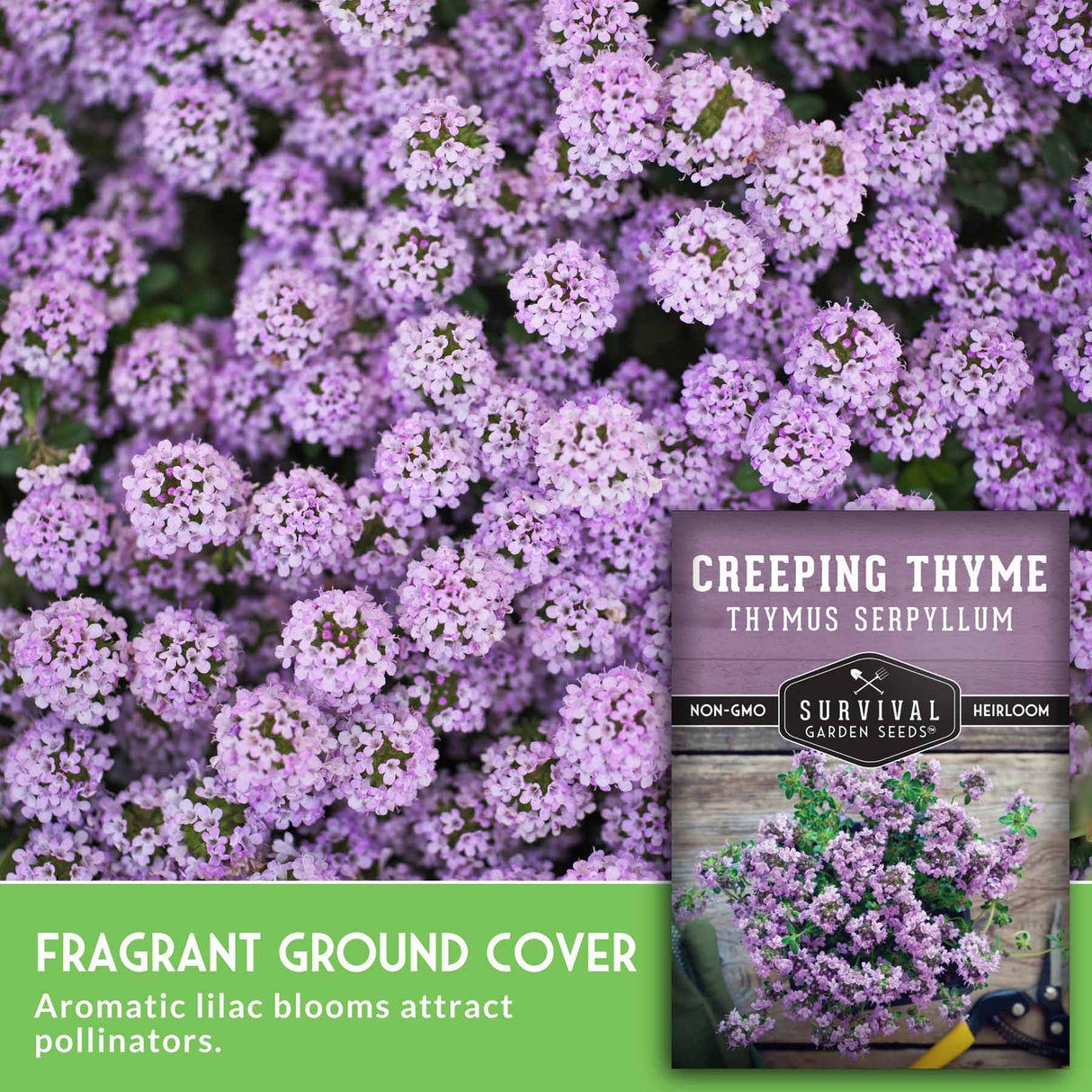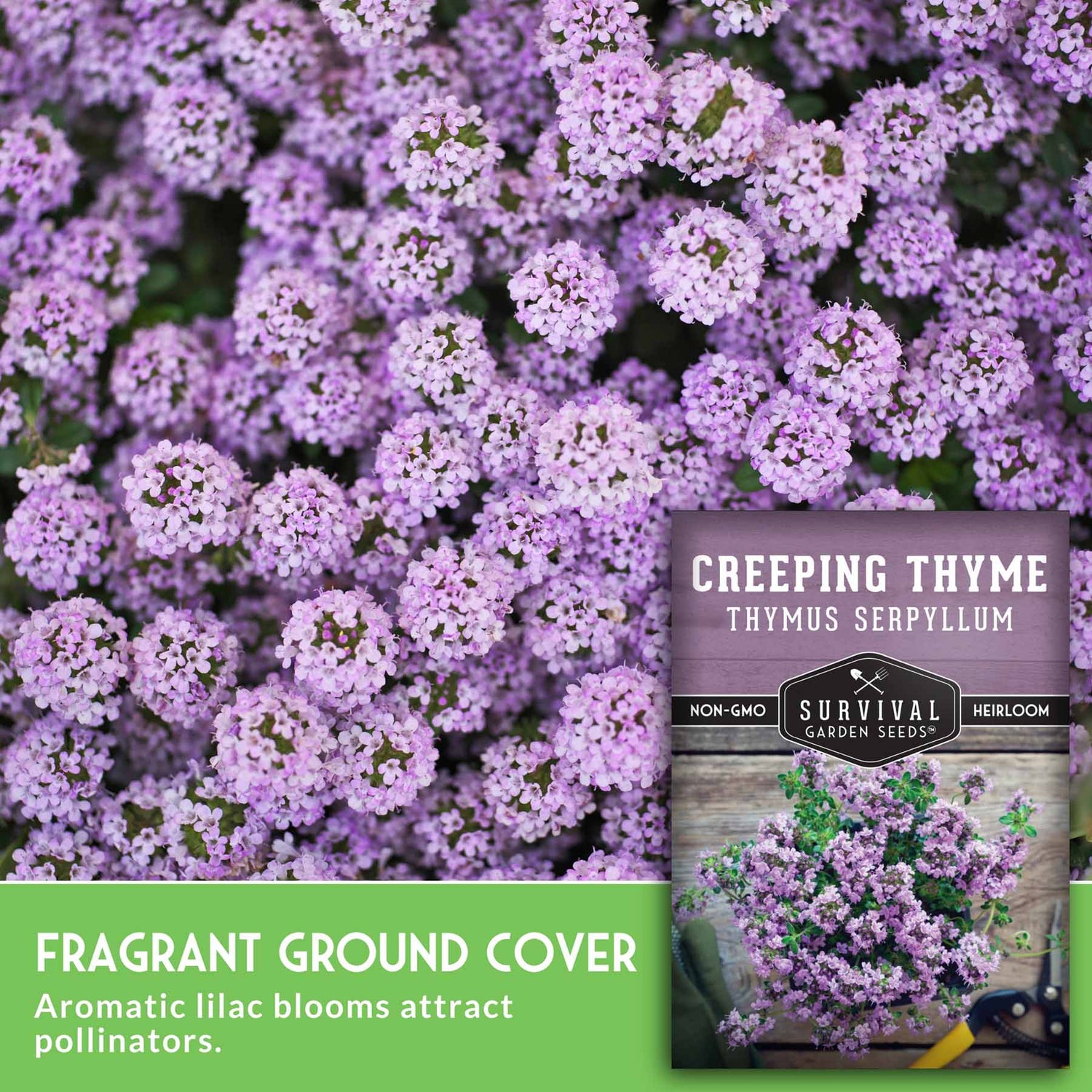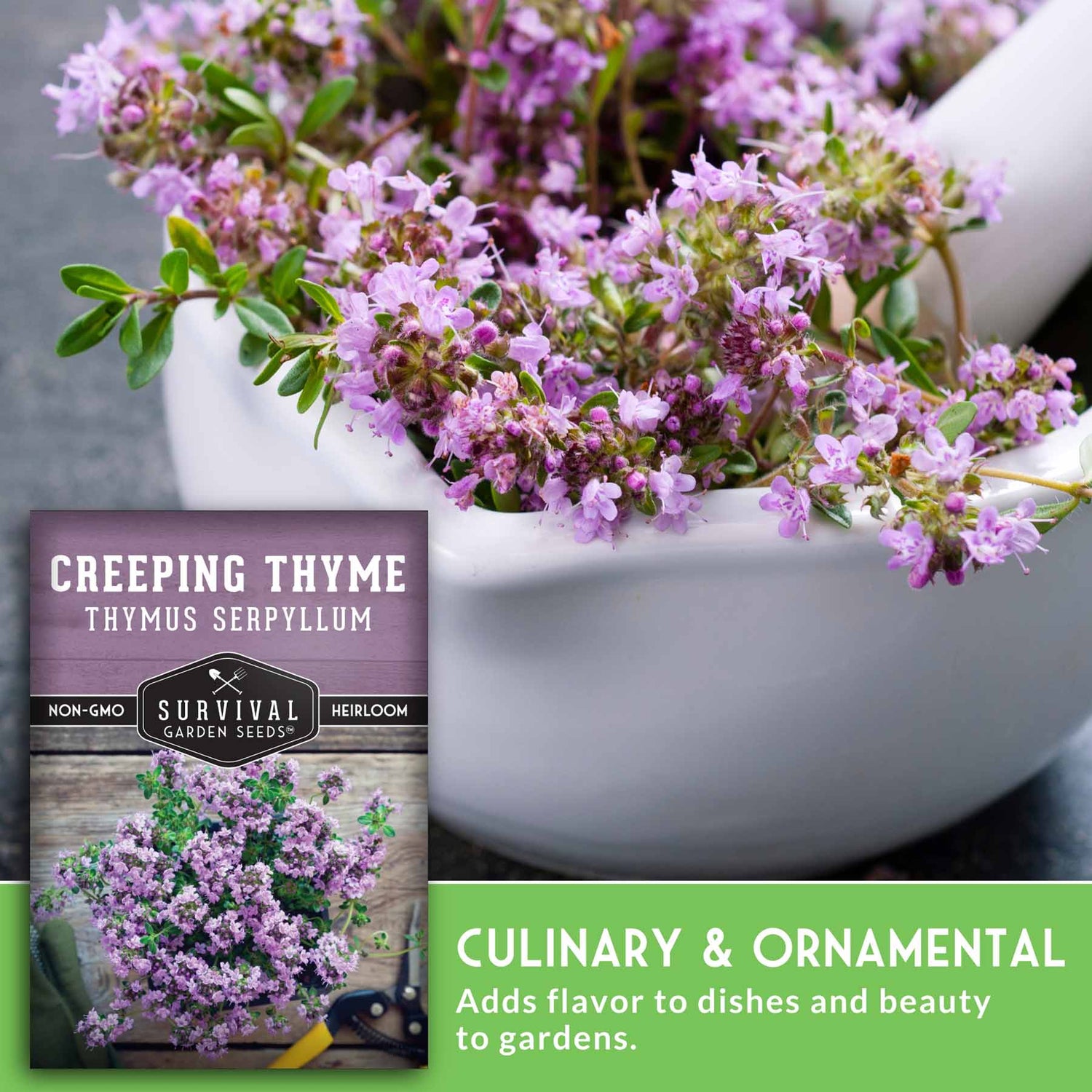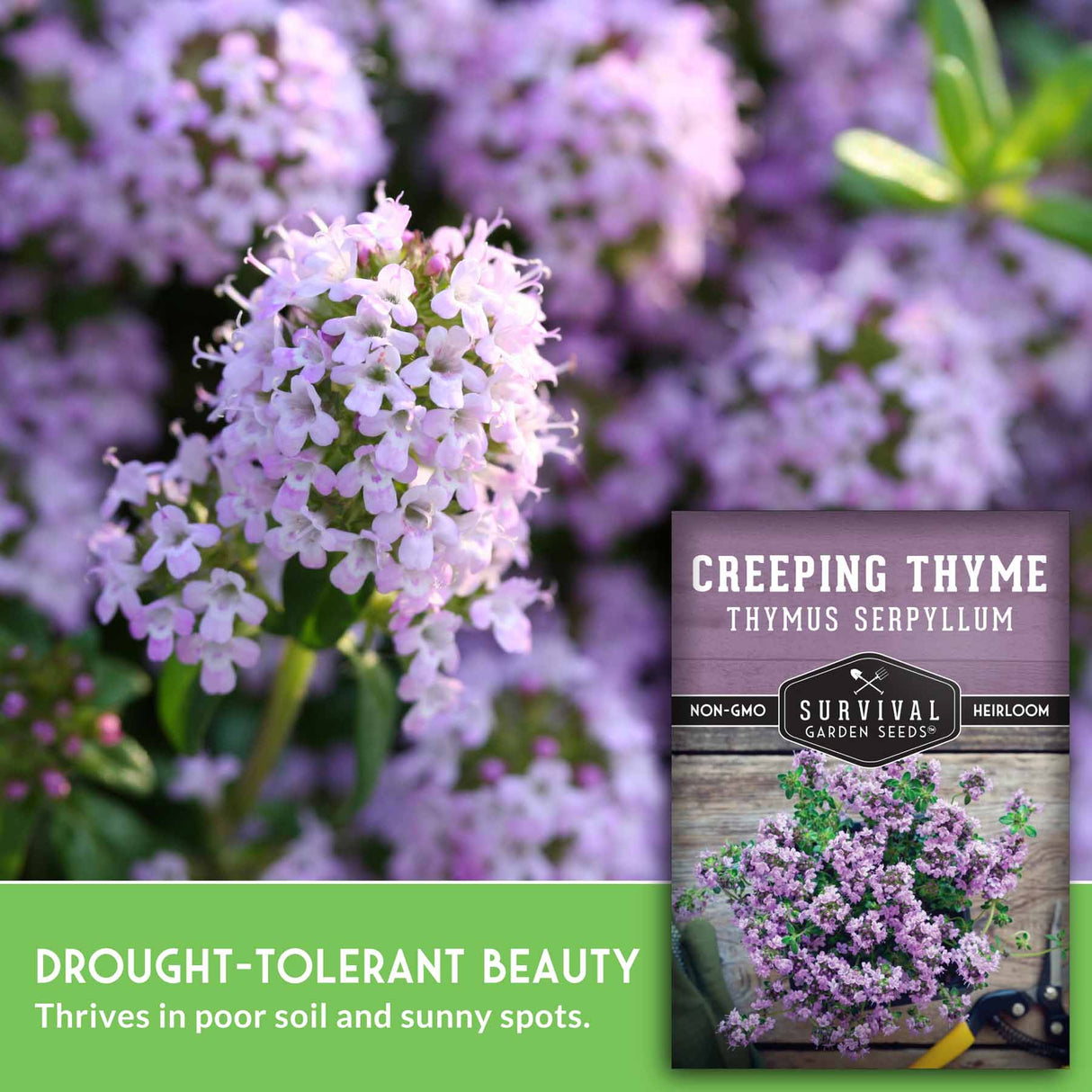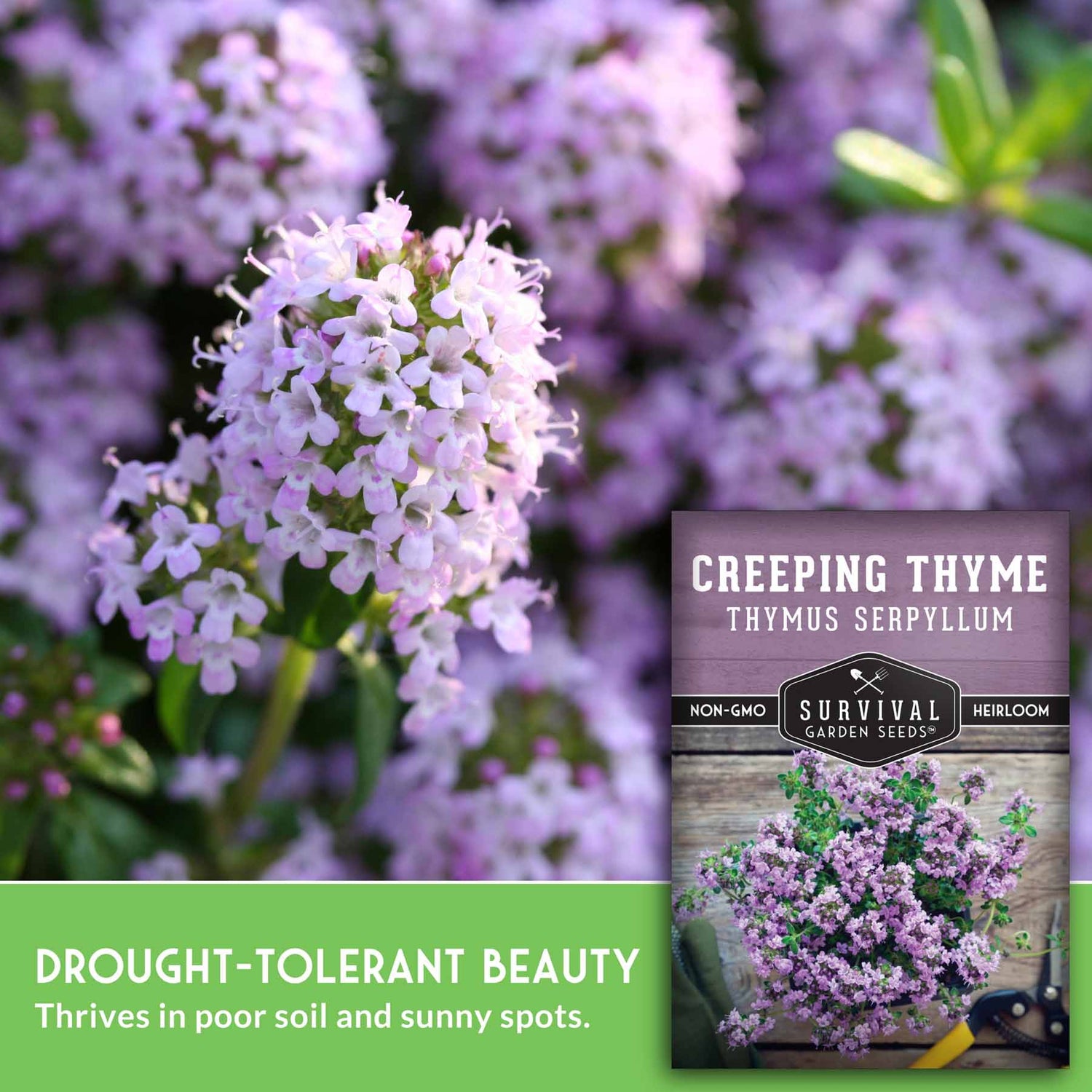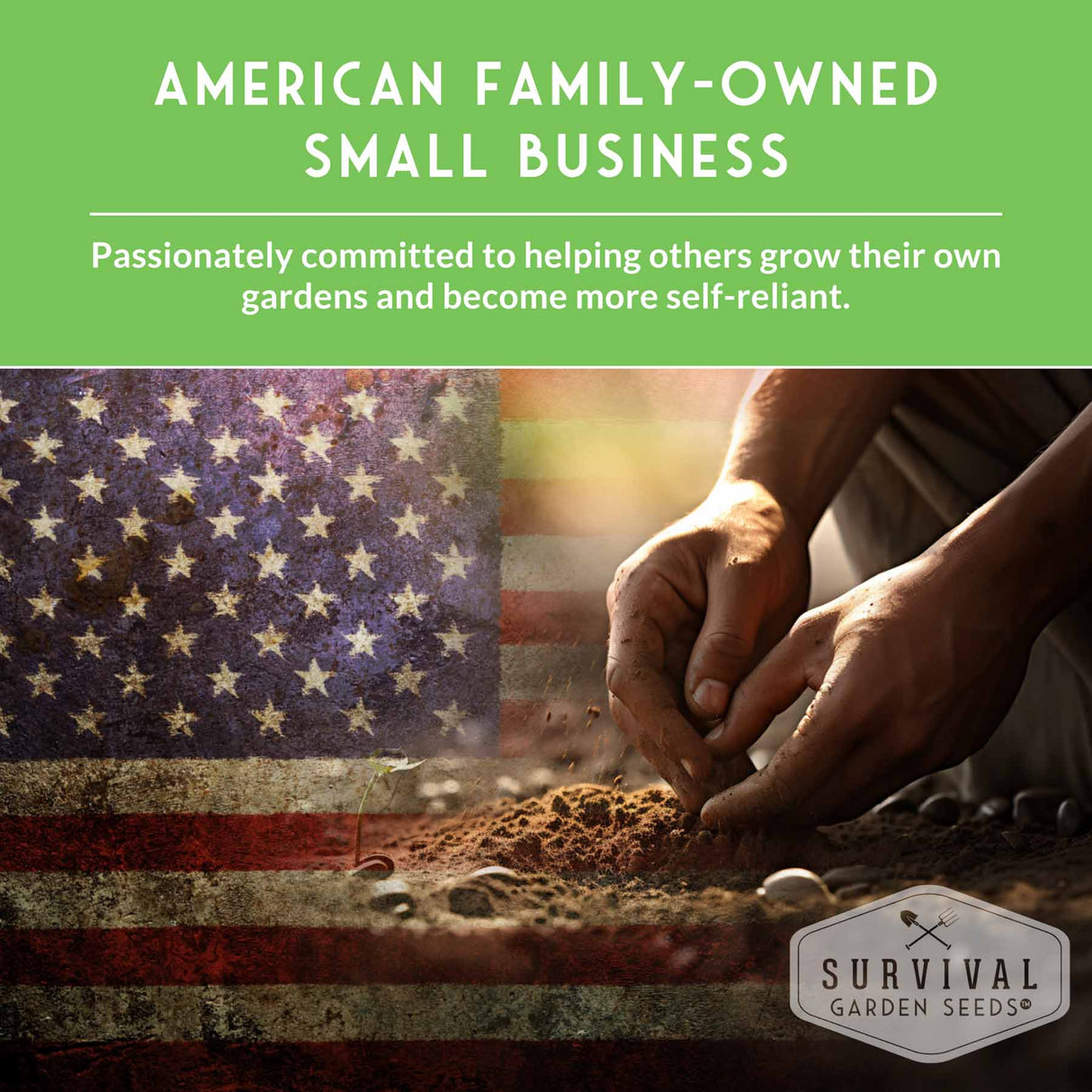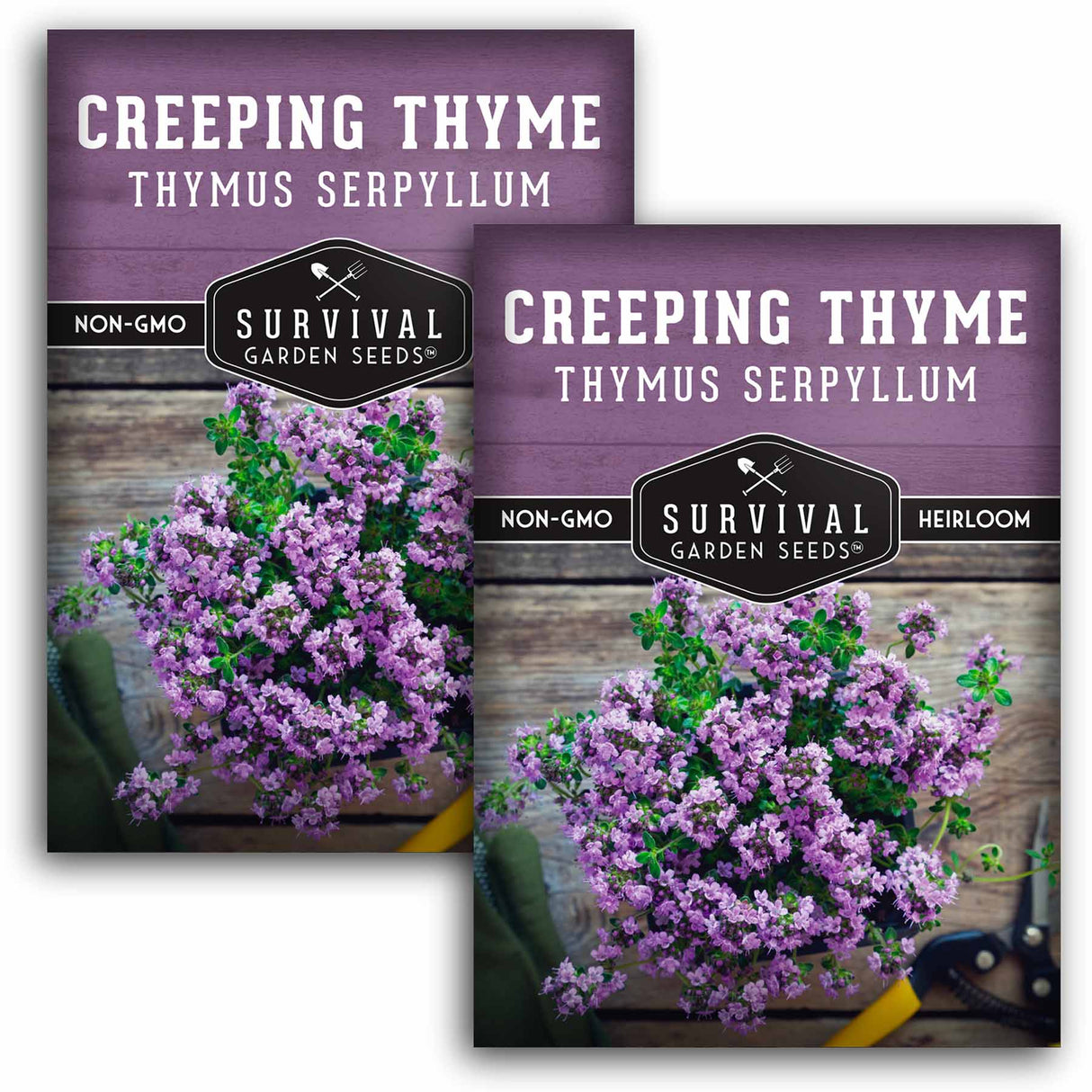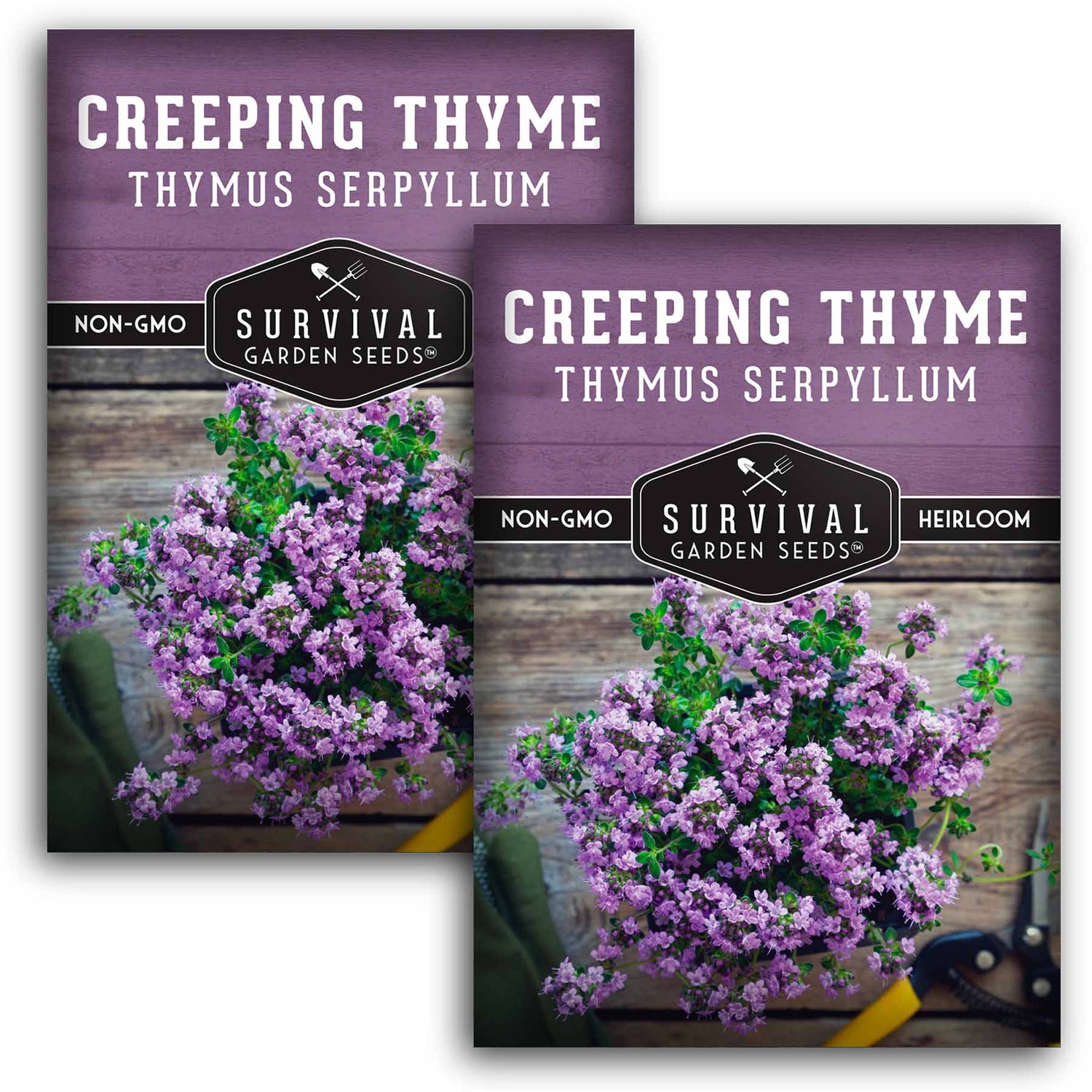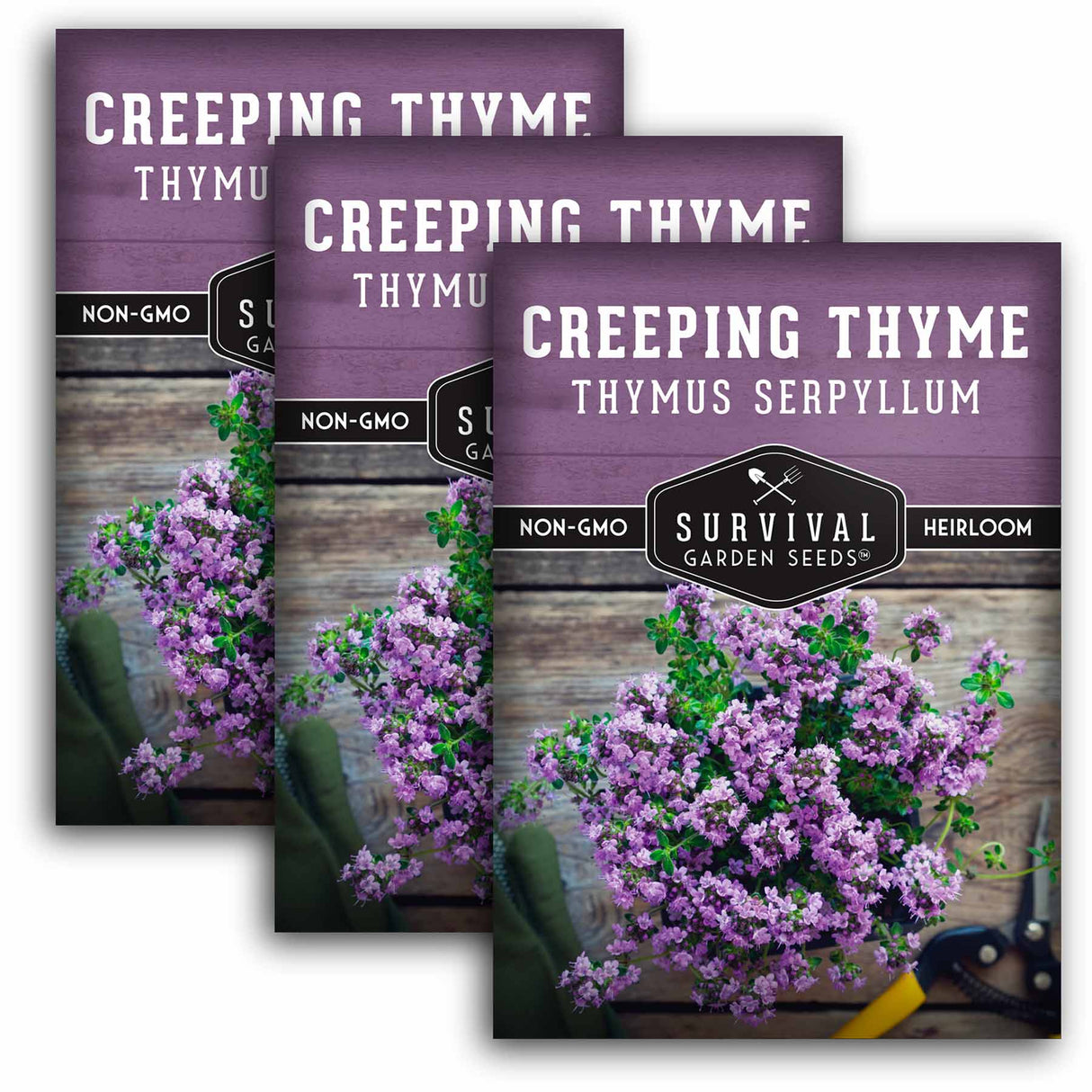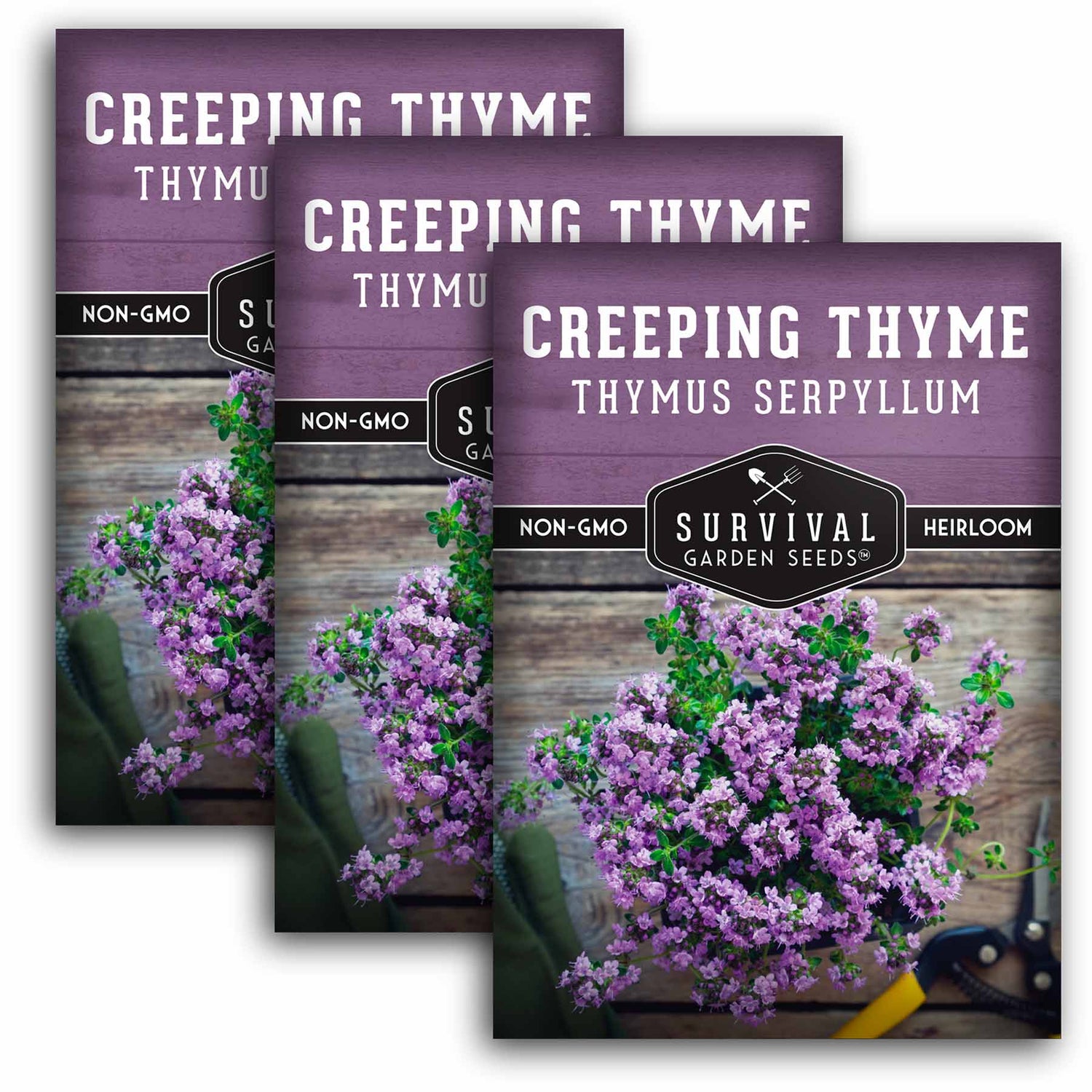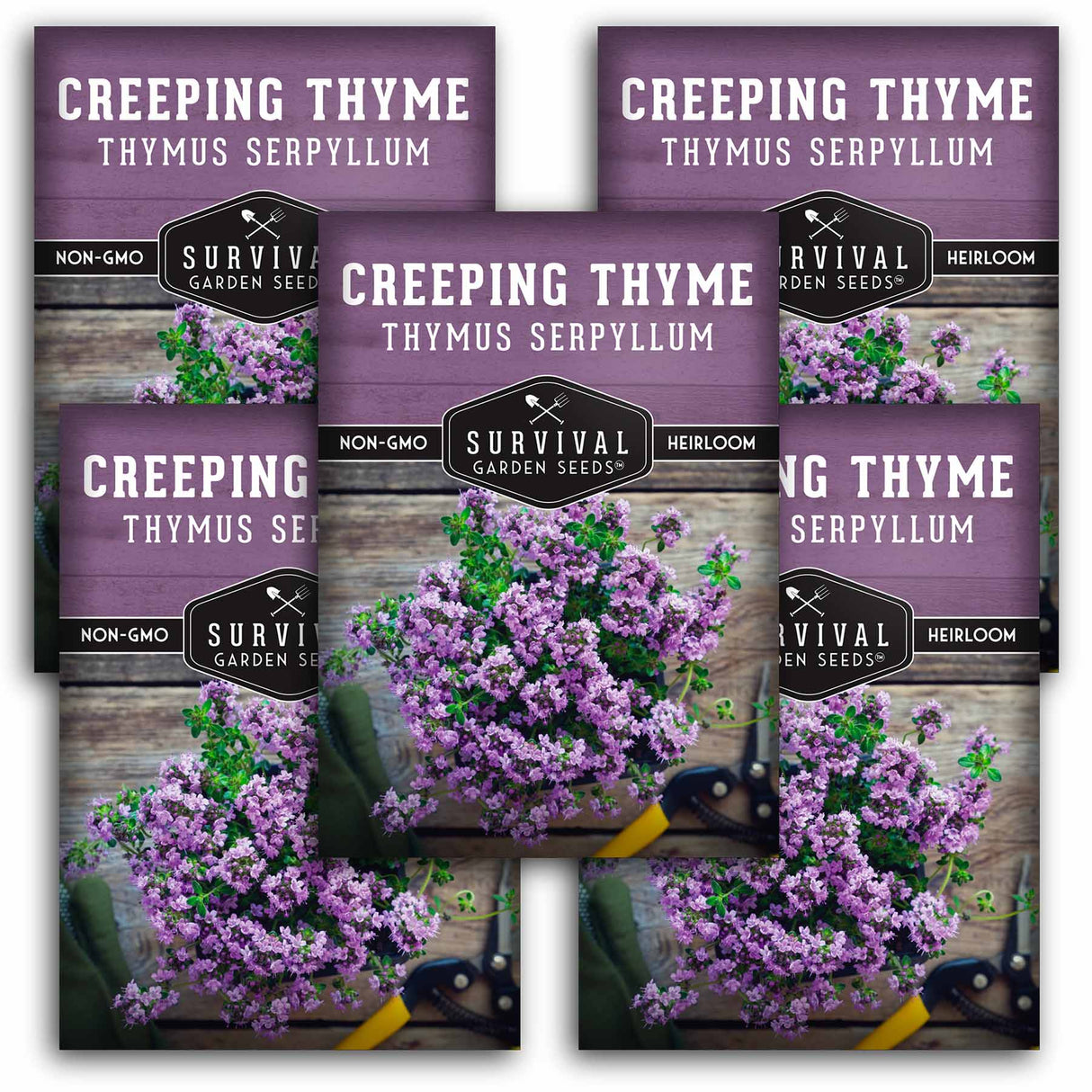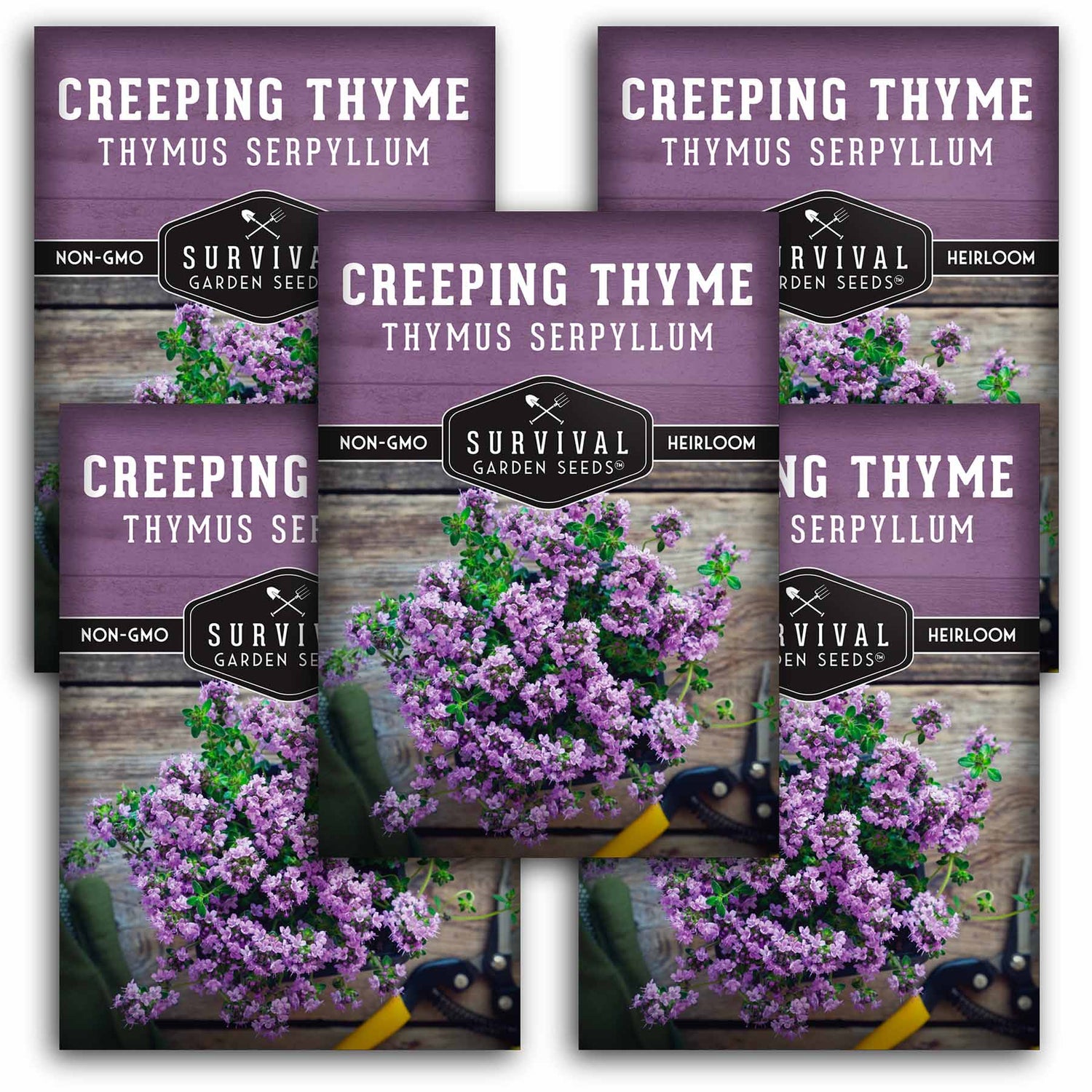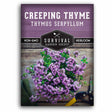Creeping Thyme Seeds – Fragrant Ground Cover with Purple Blooms | Thymus serpyllum Perennial for Rock Gardens & Pollinator Lawns
Heirloom - Non-GMO - Reliable Germination
Creeping Thyme Seeds – Fragrant Ground Cover with Purple Blooms | Thymus serpyllum Perennial for Rock Gardens & Pollinator Lawns - 1 Packet is backordered and will ship as soon as it is back in stock.
Couldn't load pickup availability
Transform your garden into a fragrant, living carpet with Creeping Thyme Seeds (Thymus serpyllum). This hardy, evergreen perennial forms a dense mat of aromatic foliage and purple-lavender blooms that attract bees, butterflies, and other pollinators. Perfect for rock gardens, pathways, or filling spaces between stepping stones, Creeping Thyme adds color, texture, and fragrance while requiring very little care.
Fragrant, Hardy, and Beautiful:
Creeping Thyme is a low-growing herb with small green leaves and clusters of delicate lilac flowers. Its lush, spreading habit creates a natural ground cover that stays green year-round in many climates. When in bloom, it releases a pleasant herbal scent and becomes a magnet for pollinators.
Why Gardeners Love Creeping Thyme:
- Forms a fragrant, flowering carpet of evergreen foliage
- Produces clusters of soft purple-lavender blooms
- Attracts bees, butterflies, and beneficial insects
- Thrives in rocky, sandy, or poor soils with minimal care
- Excellent for borders, pathways, and between stepping stones
- Drought-tolerant, low-maintenance, and long-lived perennial
How to Grow:
Sow Creeping Thyme seeds on the surface of moist, well-drained soil in early spring or fall. Press seeds lightly into the soil without covering, as they need light to germinate. Keep soil consistently moist until seedlings establish. Space plants 8–12 inches apart. Once mature, Creeping Thyme thrives in full sun and tolerates dry conditions, making it ideal for xeriscaping and low-water gardens.
Landscape Uses:
Use Creeping Thyme as a living mulch between stones or pavers, to soften hardscape edges, or to create a pollinator-friendly lawn alternative. It also cascades beautifully over walls and containers, adding a pop of color and fragrance all season long.
Net Wt. 400MG
Heirloom Herb Seeds
All of our seeds are open-pollinated, non-GMO, heirloom varieties with tested germination rates
Specifications
Specifications
-
Botanical Name
-
Seasonality
-
Planting Zones
-
Light
-
Soil Temp for Germination
-
Germination Time
-
Planting Depth
-
Plant Size
-
Days to Bloom or Harvest
-
Growing Instructions
-
Seed Saving Instructions
-
Seed Count (approximate)
Payment & Security
Your payment information is processed securely. We do not store credit card details nor have access to your credit card information.
Why Choose Survival Garden Seeds
At Survival Garden Seeds, we believe in preparing today for tomorrow’s peace of mind. That’s why we offer only heirloom, non-GMO, and untreated seeds you can trust to nourish your family and support a sustainable lifestyle. As a family-owned American company, we’re committed to providing seeds that grow strong and true—helping you cultivate health, resilience, and beauty in your garden.

Print Your Own Gift Tags & Envelopes
Spruce up your seed gift with free downloadable print-your-own gift tags & envelopes.
Frequently Asked Questions
What are heirloom seeds?
What are heirloom seeds?
Heirloom seeds are the types of seeds your grandparents grew. These varieties have been passed down from generation to generation. They’re old reliable open-pollinated varieties that aren’t typically grown commercially. Instead, they have a rich history that predates modern breeding techniques.
You can learn more about open-pollinated, heirloom, and non-GMO seeds in our Survival Garden Training blog.
How do I know my seeds are fresh?
How do I know my seeds are fresh?
Every seed packet includes a "packed for" date, and we germination test each seed lot before packaging to ensure you receive viable, high-quality seeds that are ready to grow.
Are your seeds treated?
Are your seeds treated?
No, we do not pre-treat our farmer seeds. All of our garden seeds for sale are untreated, open-pollinated, non-GMO, and heirloom varieties. They are kept in temperature-controlled cooler storage until they are packed and shipped to keep them pest and disease-free.
In what zones can I grow your seeds?
In what zones can I grow your seeds?
The seeds in our collections are specifically chosen from varieties that can be successfully grown from Zone 3 to Zone 10 USDA Hardiness Zones. However, individual varieties have specific needs to thrive in different environments. Each seed pack has optimal temperatures for germination and instructions on seed starting. Consult local frost dates to plan your garden and get the most out of your seeds.
What is the shelf life of these gardening seeds?
What is the shelf life of these gardening seeds?
Most seeds remain viable for 3 to 5 years or longer when stored properly. Check your seed packet for specific varieties. For best results, keep your seeds in a cool, dry place away from direct sunlight and moisture. Store them in an airtight container in a consistent temperature environment—a refrigerator or cool basement works well. Proper storage helps maintain germination rates and extends seed life well beyond the packed date.
Where are Survival Garden Seeds sourced?
Where are Survival Garden Seeds sourced?
The majority of our seeds are sourced in the United States, with a few exceptions when the seed is difficult to source domestically. Whenever we do have to source outside of the US, we ensure our seeds are safe to grow, non-GMO varieties that meet our standards for germination and reliability.





